The X Button
Blowing Up the House
by Todd Ciolek,

The folks at Treasure figure prominently into this week's column: they have a new Bangai-O game out now, a Guardian Heroes port in the works, and an Xbox Live version of Radiant Silvergun coming soon. This makes it an ideal time to complain about Treasure.
For those unfamiliar with Treasure, the developer built up a really good reputation in the 1990s with games like Gunstar Heroes, Guardian Heroes, Radiant Silvergun, and Bangai-O. They made some awful titles as well, but everyone was nice enough to ignore those. In the past decade, Treasure's made sequels to their most popular titles, in between paying rent with games based on anime properties like Bleach and Dragon Drive. Most of these sequels are pretty good, and I will even defend Advance Guardian Heroes to the ends of the Earth. But Treasure hasn't made an original game, unrelated to an established property, since 2001's Ikaruga. Perhaps they were soured on the whole concept by their attempts at making 3-D games: the arcade racer Gun Beat was canceled, and the early PlayStation 2 title Stretch Panic may be Treasure's worst moment.
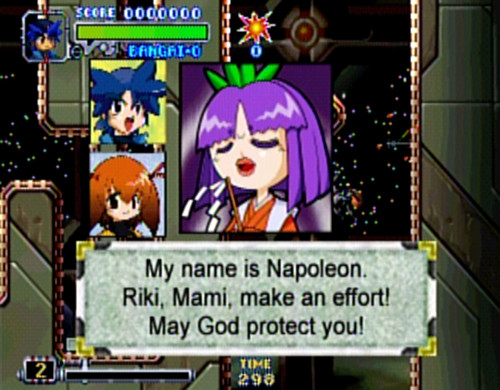
There's another problem, too: Treasure's recent games lack the personality of their most famous titles. No one quite takes Treasure storylines seriously, but their better games reach bizarre heights: the crazily ambitious plot branches of Guardian Heroes (where the main characters can actually fight their own creator), the apocalyptic Mobius strip of Radiant Silvergun, the cheesy babble of Sin and Punishment, and the nonsense of Bangai-O (above). In contrast, Sin and Punishment 2: Star Successor wasn't memorable in its silliness, and the new Bangai-O HD: Missile Fury makes no attempt to add any charm beyond the actual gameplay. Gone are the days when even a middling Treasure game like Light Crusader let a medieval warrior-hero battle a Nazi Panzer IV tank.
Treasure is still a creative developer. Their frame is just narrower, grounded in their past successes and seldom looking for new material. Hope lies in reports of their next project, a traditional shooter in the vein of Ikaruga and Radiant Silvergun. Perhaps that won't be entirely original, but it'll be new in the most important ways.
NEWS
GUARDIAN HEROES HD COMING TO XBOX LIVE ARCADE, PURISTS TO COMPLAIN ABOUT IT
Guardian Heroes is one of those Treasure games, the sort that made normally discerning players into rabid devotees of a small Japanese developer with an unspectacular name. Indeed, the praises heaped upon Guardian Heroes for the Sega Saturn would be embarrassing if it didn't earn a lot of them: it's an engaging, side-scrolling brawler infused with the attacks of a fighting game, and it's carried out with a branching storyline, five playable heroes, and a bonus multiplayer brawl that invites every character in the game. And all of that's headed for Xbox Live Arcade in a high-definition port of Guardian Heroes.

Treasure's sharpened Guardian Heroes isn't all that different from the Saturn original. The player's life/magic meter is smaller, the backgrounds are darker, and all of the 2-D sprites, from the cast to the spell effects, are much smoother. The versus mode now allows 12 players, and the character art's redrawn slightly, resembling the illustrations from 2004's Advance Guardian Heroes. The original version will also be included, for those who prefer the Saturn-era visuals.
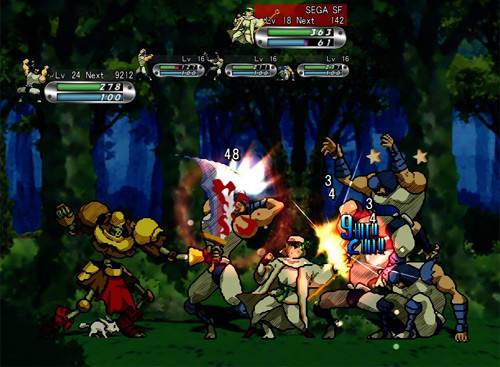
Guardian Heroes HD is due out in early fall, turning a rather expensive Sega Saturn release (especially if you want the American one) into a cheap download. Surely some of the above-mentioned Treasure devotees will watch the remake for any minor flaws or shifts in game design, even though the Live version of Ikaruga got very little wrong. Treasure fans can be quite crazy.
SOMEONE REMEMBERS SABER RIDER AND THE STAR SHERIFFS
If asked to turn any imported anime of the 1980s into a video game, most developers would choose Robotech or Voltron. Well, that's not what a German outfit called Firehazard did. No, the developer approached World Events Productions and got the rights to make modern games based on Saber Rider and the Star Sheriffs.
As many anime nerds are aware, Saber Rider started out as the Japanese series Star Musketeer Bismarck. Then World Events Productions adapted and even expanded it for English-speaking audiences. It's hardly the most popular cartoon of its era, but there's something patently ridiculous about the show's mixture of hokey '80s giant-robot stylings and Wild West overtones. And Firehazard is intent on fashioning it into a rail-based shooter. Their long-running ambitions resulted in concept stills for Saber Rider titles on the Game Boy Advance and DS, and now the game's moved to the 3DS, Wii, iPhone, Xbox Live Arcade, and PlayStation Network. The studio already has a great deal of concept art and mock-up posters, including an old DS cover shot.
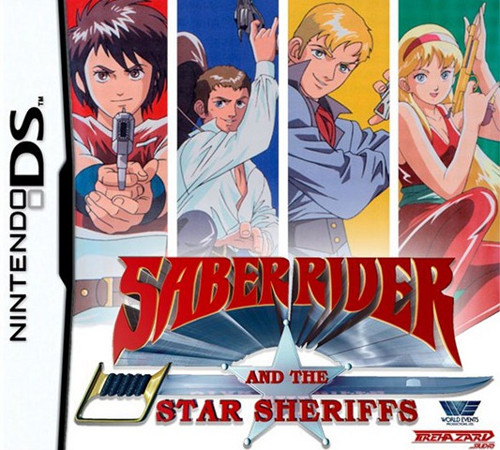
So what doesn't this Saber Rider and the Star Sheriffs game have? A publisher. While Firehazard has WEP's approval, no game company has picked up the title and agreed to distribute it. This makes it more likely that the game will be a downloadable title if it ever actually comes out. It currently has a 2012 release date, and the previews shown so far are decidedly basic. At least its chances are better than a video game based on Vytor: The Starfire Champion.
UNCHAINBLADES REXX IS STILL CALLED THAT
Now for an update on UnchainBlades Rexx. It has the greatest name in Japanese RPG history, and it will until some well-meaning publisher decides to localize it with a less memorable title. However, Japan will know this dungeon-heavy RPG as UnchainBlades Rexx when it arrives on the 3DS and PSP this July. The game follows Fang, a once-cocky dragon spirit cursed with human form. His quest for his former shape attracts a motley band of similarly quasi-human allies, including a phoenix princess, a death-goddess, a golem, and a mage with a Medusa-like gaze. Of course, most of them are designed in typical anime-RPG fashion, but at least they're unique in concept.
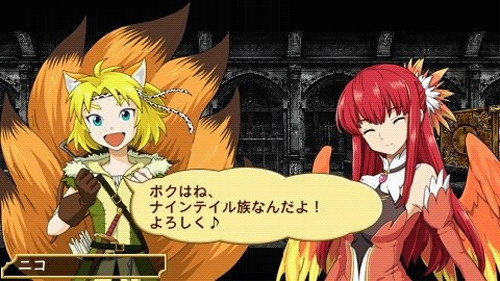
UnchainBlades Rexx isn't without some names on its staff. Publisher Furyu drew in Takahashi Hino and Toshio Akashi, who worked prominently on the Lunar, Grandia, and Evolution games. Their presence is perhaps overwhelmed by all of the manga and game artists who contributed to UnchainBlades Rexx, with each of them designing a different character. Among the participants are Toshiyuki Kubooka from Lunar and Giant Robo, Shinichiro Otsuka from Eternal Poison (which admittedly had decent art), Sunaho Tobe of Hexyz Force, and manga artists Suu Minazuki and Haruyuki Morisawa. Also, Bastard!! creator Kazushi Hagiwara drew Crunea, the goddess who cursed Fang for his douchebag ways.
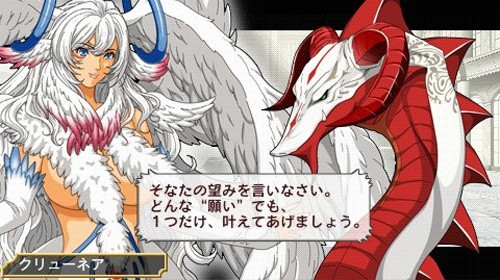
Anime artists aside, UnchainBlades Rexx is a dungeon-crawler, with Fang's oddball group hacking through a semi-sentient maze called Titan. Battles and exploration are handled from a first-person viewpoint, and the game allows Fang to expand his team by winning over monsters. Each of the game's four party members can command four sub-creatures of his or her own, creating a lineup well beyond the quartet of dungeon adventurers seen in other RPGs. Fang's personality influences his companions' prowess, too, and he'll have to keep them happy during brief conversations. Apart from “UNCHAIN!” popping up when Fang meets certain requirements, none of these detail explains why the game's called UnchainBlades Rexx. And I really don't care.
IN BRIEF: KILLAWARE SUICIDES, JALECO LIVES, BLAZBLUE PATCHED
Killaware was a developer with promise. Founded by Atlus staffers Kazuhiro Yamao and Kiyotaka Ueda, the studio crafted “active adventure” games, mixing the dialogue-heavy approach of visual novels with mini-games. Their first title, Kuryuu Youma Gakuenki Recharge, stayed in Japan, but Killaware got a crack at North America with Ignition's release of Lux-Pain, a Persona-like tale of demonic mental illness in a small town. Unfortunately, the game's translation was a mess, and its reviews were unflattering. The subsequent Killaware games, Another Time Another Leaf and Tsuku Monogatari, stayed in Japan. Last month, Killaware filed for bankruptcy, and their website vanished. And so another potentially gifted game company goes under.
As far as games go, Jaleco is all but gone. The main section of the company sold the game division to Game Yarou years ago, and Jaleco's legacy subsists only in the form of Suchie Pai reissues and the now-forgotten Wii action game Ougon no Kizuna. But now there's a way to recall Jaleco's better times, thanks to the eShop on Nintendo's 3DS. The ESRB recently rated two of Jaleco's Game Boy games: Fortified Zone and Avenging Spirit. And they're good ones, too: Fortified Zone is a maze-based shooter, and Avenging Spirit is a port of the arcade side-scroller where a vagrant ghost possesses all sorts of characters. I fully support the eShop filling itself with decent Game Boy games from defunct publishers. All we need now are Seta's Battle Bull and Electro Brain's Trax.
Aksys Games just released two important updates for BlazBlue: Continuum Shift. There's a Version 1.03 upgrade, which includes several gameplay adjustments. And then there's Platinum the Trinity, a magical-girl archetype who attacks with stuffed bears, twinkling heart effects, and three separate personalities. Xbox 360 owners can pick up both updates, but PS3 owners can only use the patch, due to the PlayStation Network's continued downtime. At any rate, Platinum and the other two download-only characters, squirrel-girl boxer Makoto and werewolf butler Valkenhayn, will be immediately playable in the upcoming PSP and 3DS version of BlazBlue: Continuum Shift.
REVIEW: BANGAI-O HD: MISSILE FURY
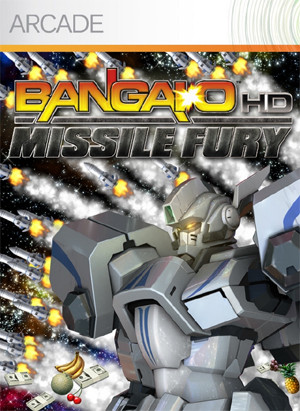 Developer: Treasure
Developer: Treasure
Publisher: D3 Publisher
Platform: Xbox Live Arcade
Players: 1-2
MSRP: 800 Microsoft Points ($10.00)
The Bangai-O series knows exactly what it wants, and what it wants is destruction, pure and chaotic. There are treacherously designed levels, creative weapons, and, in some cases, borderline-Dadaist humor, but all of that's in service to the profusion of missiles, lasers, and rampant explosions that Bangai-O serves up with minor preamble. Long one of the best source for immediate shooter gratification, it's now a downloable game that goes right for the throat.
Without even a wisp of storyline, Bangai-O HD: Missile Fury lays down its rules quick and dirty: you're a tiny little robot called Bangai-O, and you're surrounded in every stage by equally shrunken-down foes: turrets, tanks, giant ants, numerous other robots, and even destroyable buildings that must've done something to annoy you. Fortunately, the Bangai-O is equipped with a multi-directional gun and several different forms of firepower: enemy-seeking missiles, bouncing energy shots, rapid-fire lasers, collateral-damage napalm, and a short-range Break missile. The Bangai-O can unleash massive barrages of projectiles, and there hangs the key to Missile Fury's explosive allure: the more enemy shots that surround, the greater your counterattack will be. This equation can progress until you're hurling out 4000 enormous missiles at once, destroying all in their path and slowing the game's engine to a momentary crawl.
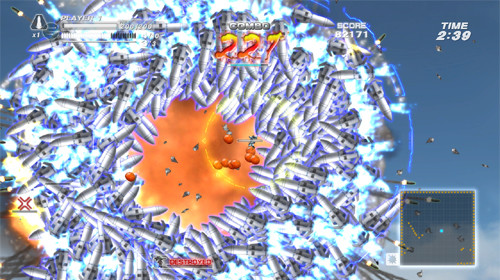
Missile Fury's rhythm of explosions is easy to appreciate within the game's wide scale. Bangai-O's a small collection of pixels and so are most of its enemies, so there's a massive playfield on display at any time. Instead of zooming in, Treasure uses the high-definition nature of the game to cram even more on the screen, and the results are almost harder on the eyes than the original Bangai-O and its DS sequel, Bangai-O Spirits. Not that it's unimpressive to watch: the intense whirls of missiles and bullets never grow wearisome, and the game's shows of destruction are a joy to behold, especially when they involve soccer balls.
In comparison to the past two Bangai-O games, Missile Fury is a bit stricter. The Bangai-O is surrounded by a close-range yellow circle and a larger blue circle, and they govern many of the game's special moves. The outer blue one shows the range of heat-seeking missiles, while the inner yellow one allows you to freeze enemies within its range. It also tracks just how big a return volley of missiles will be, challenging you to get as many enemy bullets within that yellow circle without being destroyed. Also in the Bangai-O's arsenal are dashing strikes that bounce enemies around, as well as a Max Attack that uses five lengths of the counterattack meter to make the player briefly indestructible. Yet some weapons are missing. Gone are the energy sword, the bullet-reflecting bat, and the protective shield from Bangai-O Spirits.

Treasure packed Missile Fury with over 100 stages, and they're surprisingly varied. They're also hard, but that's not as surprising. The game favors a more careful pace than its predecessors, rewarding players who approach levels slowly instead of hurling themselves into enemy onslaughts and jabbing the counterattack button. Each stage progresses like a puzzle, and most of them demand replays before they can be finished within the right amount of time. The game's forgiving of long-term failure, though; flub a level three times, and you can move on to the next one. That makes up for the earlier levels' strange limitations, which sometimes deny you the ability to counterattack or dash. Unlike Spirits, the game doesn't let you pick your weapons before each level. You're forced to make do with power-ups found in the stages themselves, and it lessens the anything-goes atmosphere that made the DS game so fun.
Other odd choices dog Missile Fury in the margins. The screen turns a thick red when the Bangai-O's life meter is low, making it difficult to see what's attacking you. It's hard to recover from this, and low health becomes an essential death sentence. The game's also lacking in little touches: the first Bangai-O had delightfully bizarre conversations in each stage, and Spirits had self-mocking tutorials featuring callous youths. Missile Fury just has a grizzled, rough-drawn Doctor Ban lecturing briefly before stages, and there's not much comedy aside from an in-joke or two. The soundtrack and effects are also unobtrusive, in tune with the previous games.
Bangai-O HD: Missile Fury forgets a few ingredients from its two predecessors, but it's staggering in its challenges and options. There's a decent multiplayer mode, plus the chance to create and share all sorts of torments in the game's level editor. And when all's said and blown up, Bangai-O is still the best choice for quick-fix shooting in the whole industry, no matter how small it is.
NEXT WEEK'S RELEASES
L.A. NOIRE Seeing Rockstar's name on L.A. Noire may inspire comparisons to Grand Theft Auto, but this open-world action game is better likened to The Getaway, as both share writer/director/Team-Bondi-founder Brendan McNamara. If The Getaway was a modern London crime drama, L.A. Noire heads back to a simpler and perhaps even grislier stage: the underbelly of 1940s Los Angeles. There police detective Cole Phelps is confronted by a host of murders, recalling the Black Dahlia case or the corrupt paths of L.A. Confidential. But that's only the main thrust of the game, as the player's also free to explore potentially less morbid investigations in L.A. Noire's expansive recreation of postwar L.A. All of the characters were motion-captured by an extensive new technology, though the limits of modern game engines are clearly in effect during the game's many conversations. And the game, unlike GTA, is still about the ongoing storyline first and foremost; fail a mission too many times, and you'll have the option of skipping it. So really, it has something in common with Bangai-O HD: Missile Fury. And that's a good thing. |
discuss this in the forum (14 posts) |
this article has been modified since it was originally posted; see change history
 Developer: Team Bondi
Developer: Team Bondi